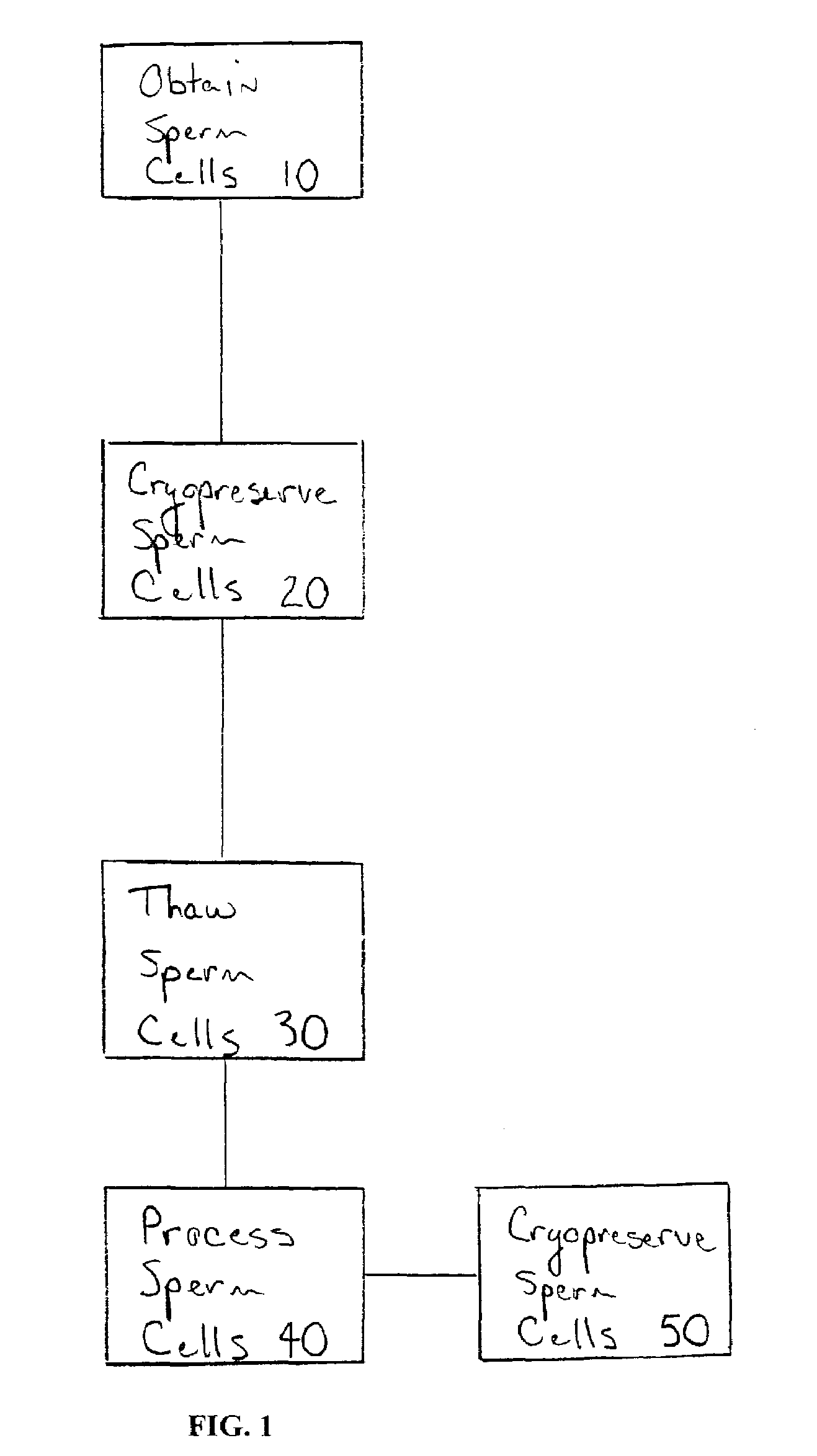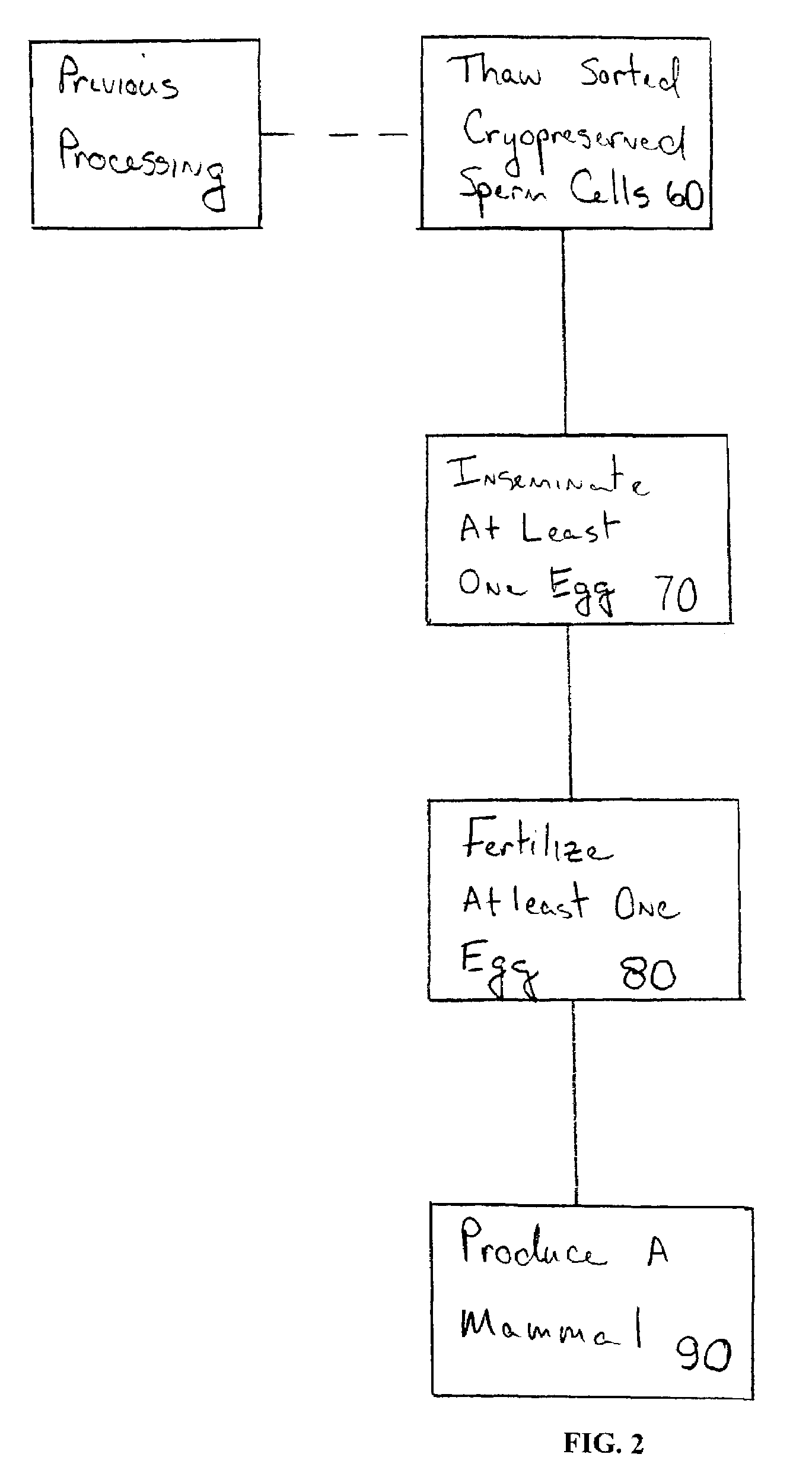Sperm cell processing and preservation systems
a sperm cell and processing technology, applied in the field of sperm cell processing and preservation systems, can solve the problems that traditional processing techniques addressing sperm viability, function, viability, functionality, preservation may not yield preferred fertility rate, fertilization rate, fertility rate, etc., to maintain or enhance a greater sperm cell quality, enhance sperm viability, function, and function.
- Summary
- Abstract
- Description
- Claims
- Application Information
AI Technical Summary
Benefits of technology
Problems solved by technology
Method used
Image
Examples
example
Effect of Dose of Sperm Processed for Sex-Sorting and Crypreservation on Fertility in Ewes
[0052]Lambs have been produced after artificial insemination (Al) with low numbers (2–4×106) of cryopreserved sex-sorted sperm. Fewer ewes were pregnant after Al with X- or Y-sorted frozen-thawed (25%, 15% respectively) than with a commercial dose of unsorted frozen-thawed sperm (54%). The object of the present study was to determine the minimum numbers of sorted frozen-thawed sperm required to obtain pregnancy rates similar to those obtained with unsorted sperm.
[0053]A sample of sperm from single ejaculates of 2 rams was stained, incubated, analyzed and sorted using a modified high speed cell sorter (MOFLO® cell sorter Cytomation, Fort Collins, Colo. USA) as previously described. Sperm were processed at 15,000–18,000 / serc without sex-sorting into 10 ml centrifuge tubes pre-soaked with 1% BSA in sheath fluid containing 0.2 ml Tris-buffered medium and 20% egg yolk (v / v). For every sample, 1.3×10...
PUM
| Property | Measurement | Unit |
|---|---|---|
| v/v | aaaaa | aaaaa |
| v/v | aaaaa | aaaaa |
| time | aaaaa | aaaaa |
Abstract
Description
Claims
Application Information
 Login to View More
Login to View More - R&D
- Intellectual Property
- Life Sciences
- Materials
- Tech Scout
- Unparalleled Data Quality
- Higher Quality Content
- 60% Fewer Hallucinations
Browse by: Latest US Patents, China's latest patents, Technical Efficacy Thesaurus, Application Domain, Technology Topic, Popular Technical Reports.
© 2025 PatSnap. All rights reserved.Legal|Privacy policy|Modern Slavery Act Transparency Statement|Sitemap|About US| Contact US: help@patsnap.com


